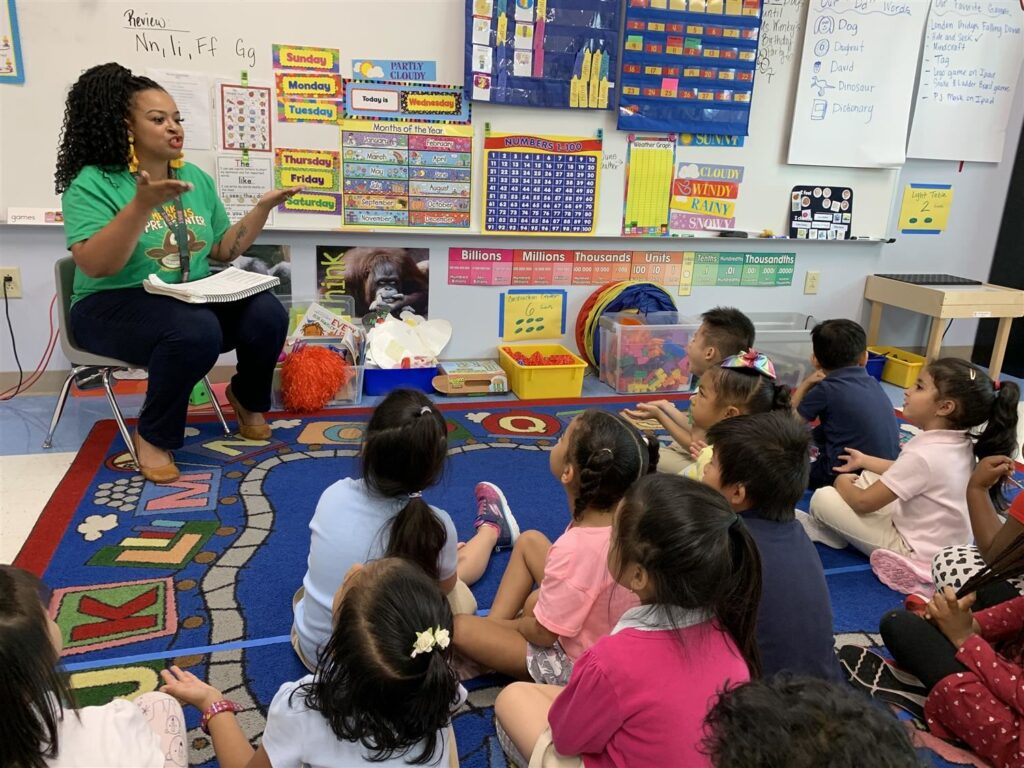The loss of childcare drove out college-educated moms in jobs where telework was an option. Why? The extra labor from childcare.

This story originally appeared on The 19th.
When loss of childcare and the pandemic collided, the already shaky foundation that kept mothers in the workforce cracked completely. But until recently, it was unclear where those fissures occurred and which mothers in particular fell through the cracks.
New research published by the U.S Census Bureau and the Federal Reserve Bank of Minneapolis in October dives into the nuance of exactly how mothers’ economic prospects changed as a result of mass childcare closures, and how those challenges persist more than 18 months since the onset of the pandemic.
After March 2020, women left the labor force in numbers so high it set off the women’s recession—the first time in American history when women have left or been forced out of work at higher rates than men. The loss of jobs in lower-paid, consumer-facing positions predominantly held by women drove some of that drop-off, but what was more difficult to quantify were the forces that were driving women to leave the workforce altogether—and how much childcare was to blame. One in three childcare jobs were lost at the start of the pandemic, and the industry is still clawing its way back.
According to the new study, the loss of childcare specifically drove out college-educated moms with a bachelor’s degree or more advanced degree who were in jobs where telework was an option.
“In some sense, that maybe sounds counterintuitive, because you have these women with higher levels of education who are in these flexible work situations,” said Misty Heggeness, principal economist and senior adviser at the U.S. Census Bureau who was the lead researcher on the study.
But what was really happening was that these women were also taking on the extra labor of care while still working—a situation that quickly became untenable. According to a Brookings Institution report from August, moms with children under the age of 12 spent the equivalent of a second full-time job caring for kids while simultaneously working their usual jobs during the pandemic.
It’s now clear that “[college-educated moms who would work remotely] are the moms that experienced large amounts of burnout because the multitasking was way too intense,” Heggeness said. “Those are the mothers for whom there was a ‘choice’ about whether to work.”
In practice, though, many moms reported that quitting their jobs did not feel like a choice at all as they faced months of virtual schooling. The first major drop off of women from the workforce after the onset of the pandemic came in September 2020, when the new school year started and many kids returned to class online. About 863,000 women dropped out of work then. The next largest drop off happened in September 2021—again at the start of a new school year—when 309,000 women left the workforce. Neither of those events was coincidental.
And so virtual learning day 1 begins. My new “desk” in the floor between both kids rooms is super comfy. #workingmom #virtualschool pic.twitter.com/IfDVIrKWDa
— Jessie D’Amato Ford (@jmpld40) September 2, 2020
Labor force participation, a rate that captures the share of working-age people who are in the workforce, dropped for moms with a college degree by as much as 2.5 percentage points during the pandemic so far—from about 74.2 percent pre-pandemic to 71.7 percent by May 2020. That was a significant decline for a rate that has remained largely unchanged for decades.
The challenges for moms with less than a college degree who were working jobs that could not be done remotely are no less severe, however.
This group of mothers did not leave the labor force as a direct result of child care. Many families can’t afford to go down to one income. That is especially true for single mothers, most of whom are also women of color.
“You see they are continuing to work, and so there’s questions around how they are doing it. Are they okay? ” Heggeness said. “You see moms who do have extra resources backing off because it is so stressful. So when you’re a mom who doesn’t have that luxury to back off of paid labor to focus on the care of your children, what does that mean both for that individual mother, for that family? What does that mean for that neighborhood and that community? And what does that mean for us as a nation?”
You see moms who do have extra resources backing off because it is so stressful. So when you’re a mom who doesn’t have that luxury to back off of paid labor to focus on the care of your children, what does that mean both for that individual mother, for that family?
That is an area of economic data that remains largely unstudied: How much care work are people taking on that is unpaid, and how does that affect their economic prospects?
It’s also a story that is gendered. Women make up 95 percent of the child care workforce and 90 percent of the home health aide workforce, two of the lowest paid occupations in the country. But they also do the majority of the at-home care that goes unpaid, a reflection of how immobile gender roles continue to be even as the pandemic has forced some recalibration.
Heggeness’s study shows how those norms continue to restrict women’s labor force participation.
The research found that moms and dads experienced similar work-related stresses at the start of the pandemic: They were equally likely to be on leave, unemployed or working and caring for kids. But as the pandemic wore on, dads stayed employed while moms became more likely to be working less, taking leave from work or leaving work altogether.
It’s a gap that is only growing. Six months after the start of the pandemic, moms were 1.5 percentage points more likely than dads to drop out of work because of child care. Eighteen months into the pandemic the gap had grown to 2 percentage points — a 33-percent increase.
As the economy reopened, and workers started to return to jobs, Heggeness said she suspects it became more difficult for men to talk to their employers about care.
“As we started to pretend things were getting back to normal, I would argue dads found it more and more challenging to say, “I still can’t, I still have care issues,’” she said. “Moms, because that is what we always do, stayed back. And now we have a growing disparity because of it.”
What’s clear is that the recovery remains uneven for women, especially mothers, the longer child care issues persist.
Mothers working as teachers and white-collar workers, for example, disproportionately left work after the end of the 2020-2021 school year and have not recovered as of the start of this new school term. Those continuing challenges are reflected in the overall health of the economy. After a summer of adding about a million jobs on average a month, the economy has added only about 200,000 a month in the past two months. Driving some of that are job losses in the education sector, in particular.
Heggeness’ research uncovers the strain happening under the surface of frequently cited economic markers like unemployment rates, which are now about the same for women and men. Unemployment rates can drop, however, because the pool of workers is smaller, which happened for women in September.
You hear the stories of moms who in the summer couldn’t find care so they put their kids in the back of their car and went and worked as a meal delivery driver or grocery delivery driver. Is that the society we’ve become?
For lower-income moms, who tend to be women of color, inability to get care for their kids could also lead to job loss because this group might miss work to fill care needs. This is also the group of workers least likely to have access to paid leave. About 95 percent of the lowest-paid workers in the country, most of them women, don’t have paid family leave, and 67 percent of those workers don’t get paid sick leave.
The untenable nature of care in this country is why Congress is negotiating a first-of-its-kind care package that would include $400 billion for a childcare and universal preschool program that would raise wages for workers, lower the cost of care for parents, and increase the number of day care options. As of now, that plan has excluded a universal paid leave proposal, though Democrats in the House have included a four-week paid leave policy as part of their version of the bill. It faces significant challenges in the Senate.
Flexible work options, telework and remote work alone won’t fix the issues facing moms, Heggeness said. The data now speaks to that—access to childcare is equally as important.
“You hear the stories of moms who in the summer couldn’t find care so they put their kids in the back of their car and went and worked as a meal delivery driver or grocery delivery driver. Is that the society we’ve become?” she said. “We need to figure out ways in which we can generate a care economy that actually cares. Here is a new opportunity to correct wrongs that existed long before the pandemic ever knocked on our front door.”
Up next:





